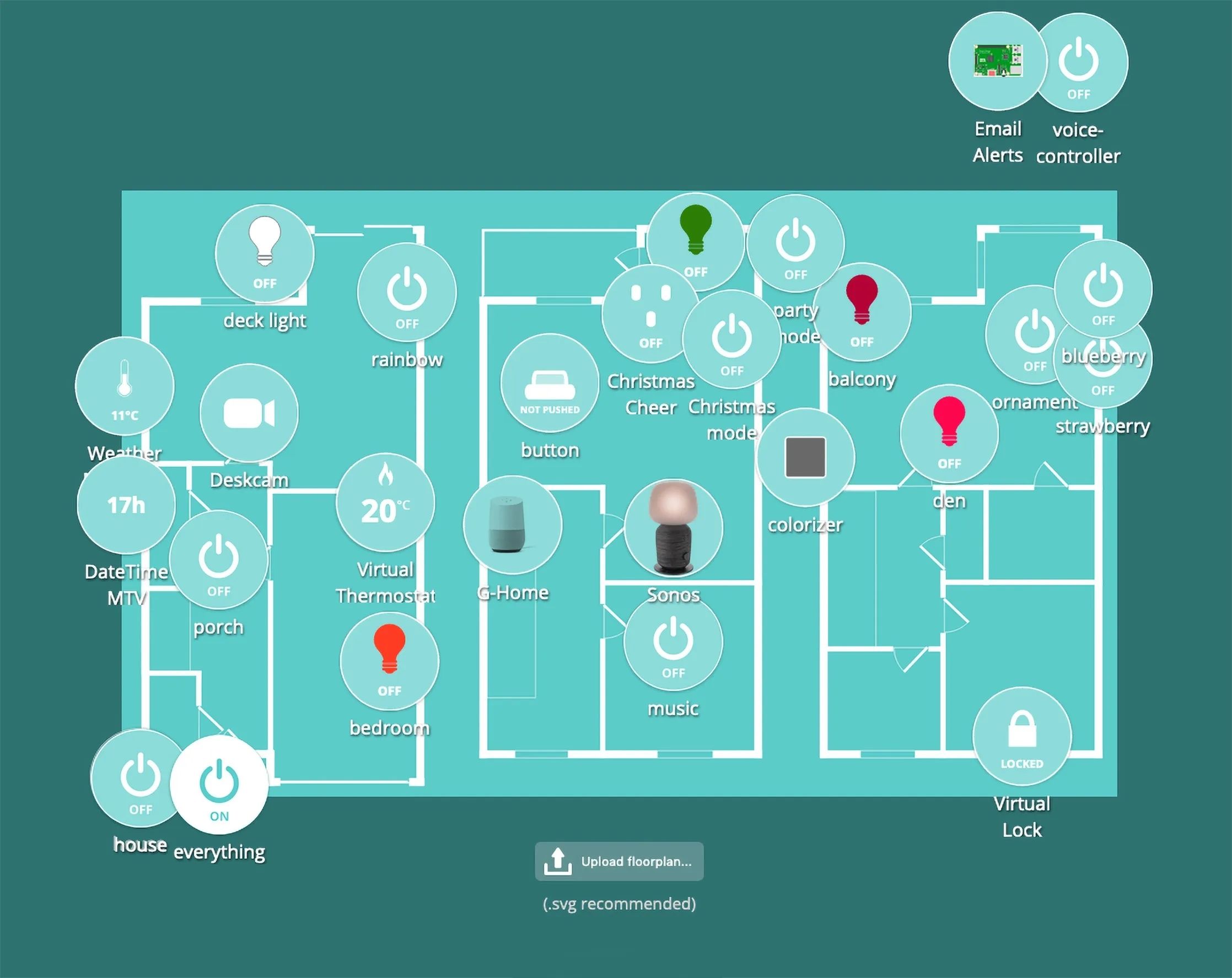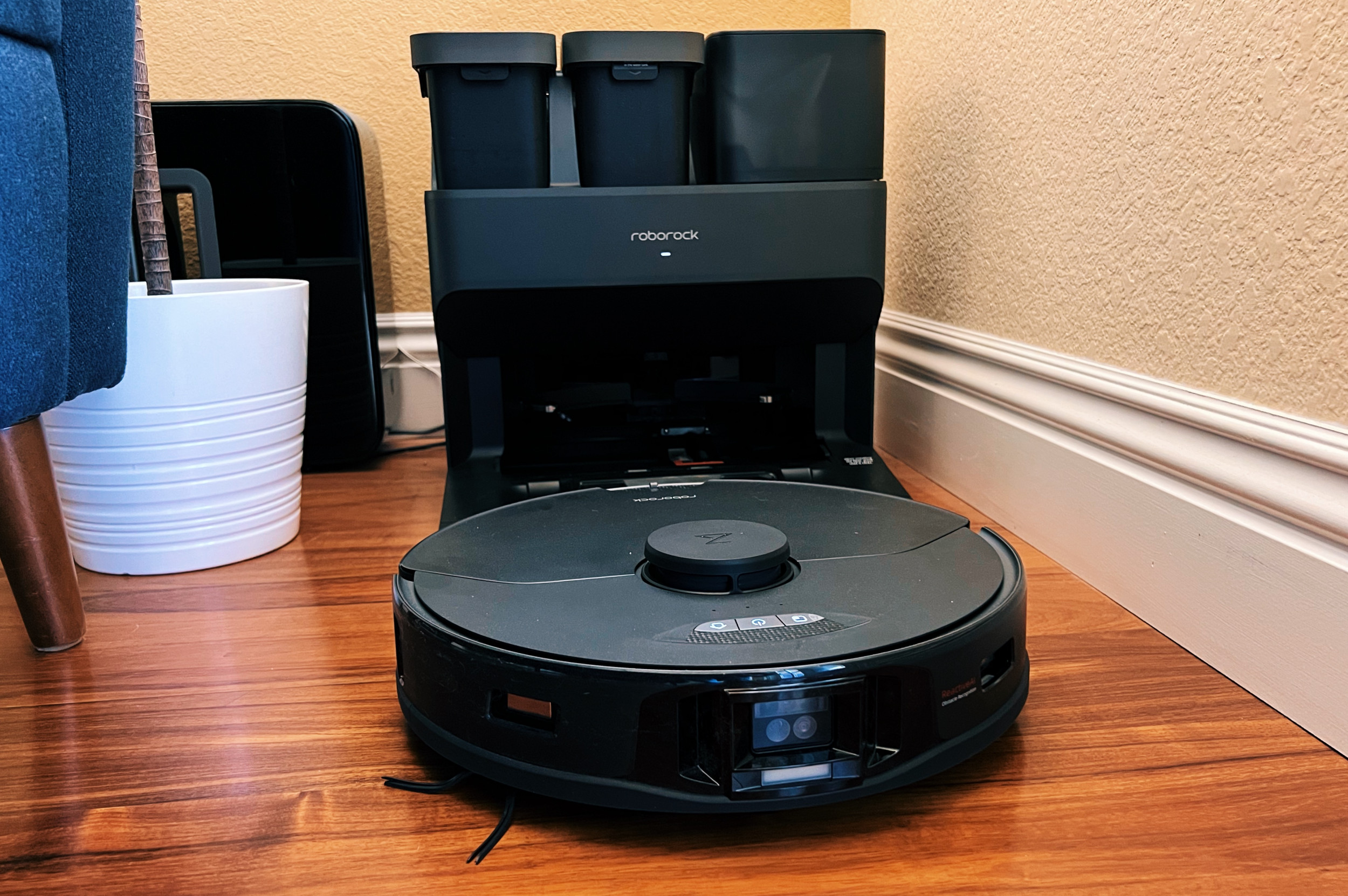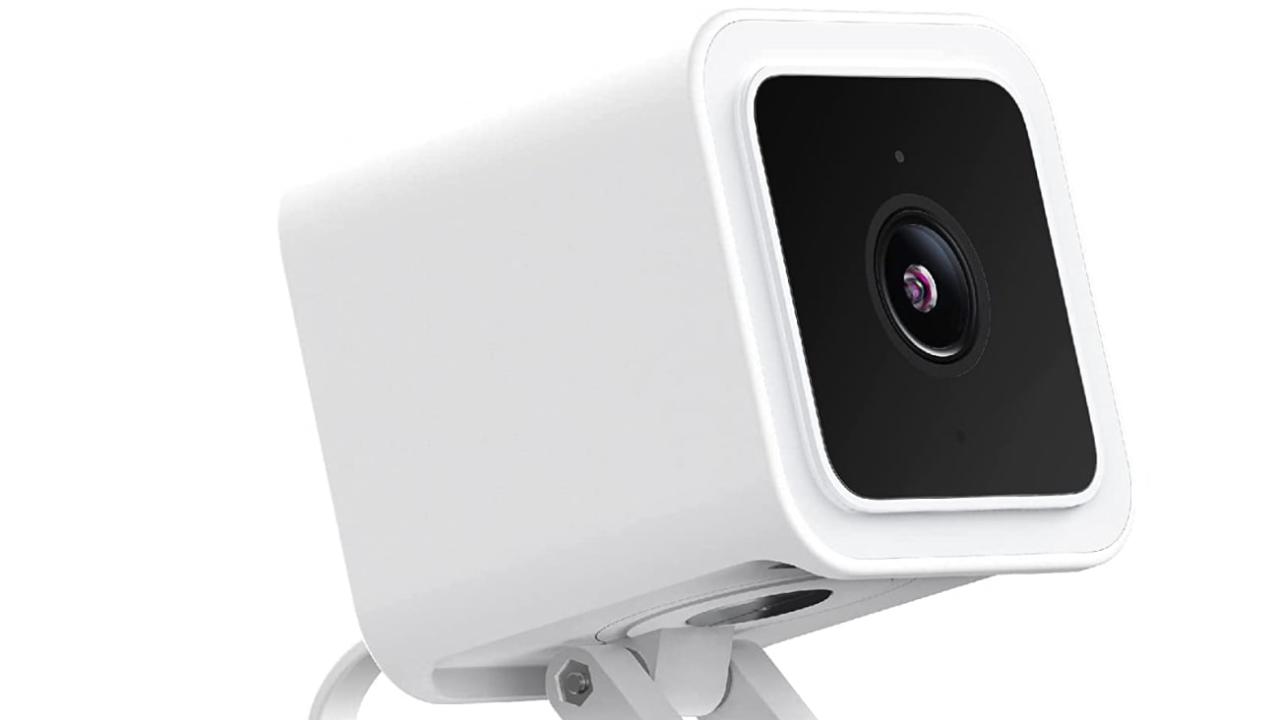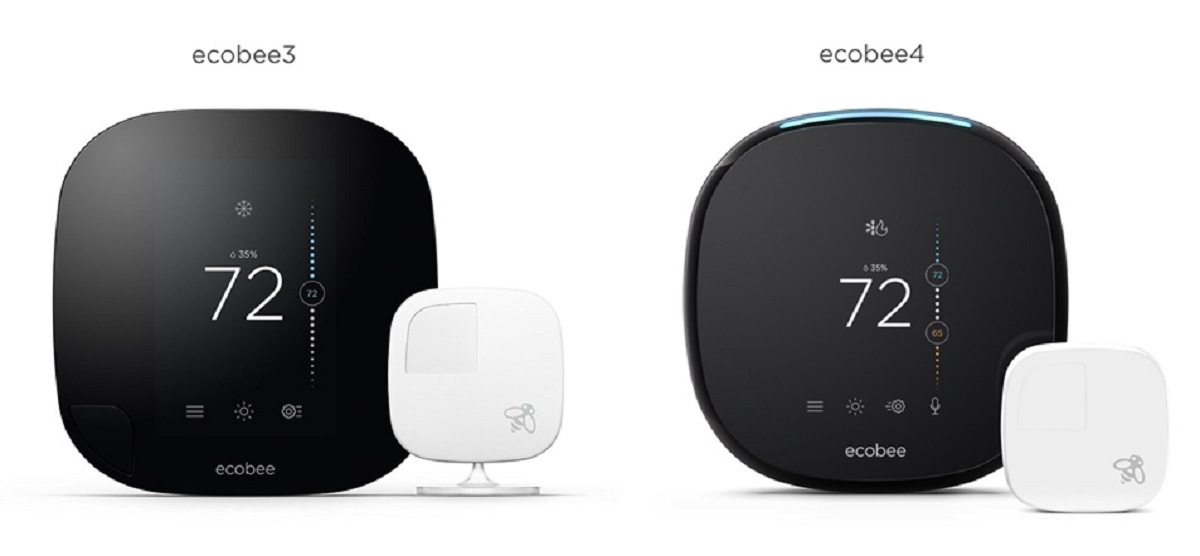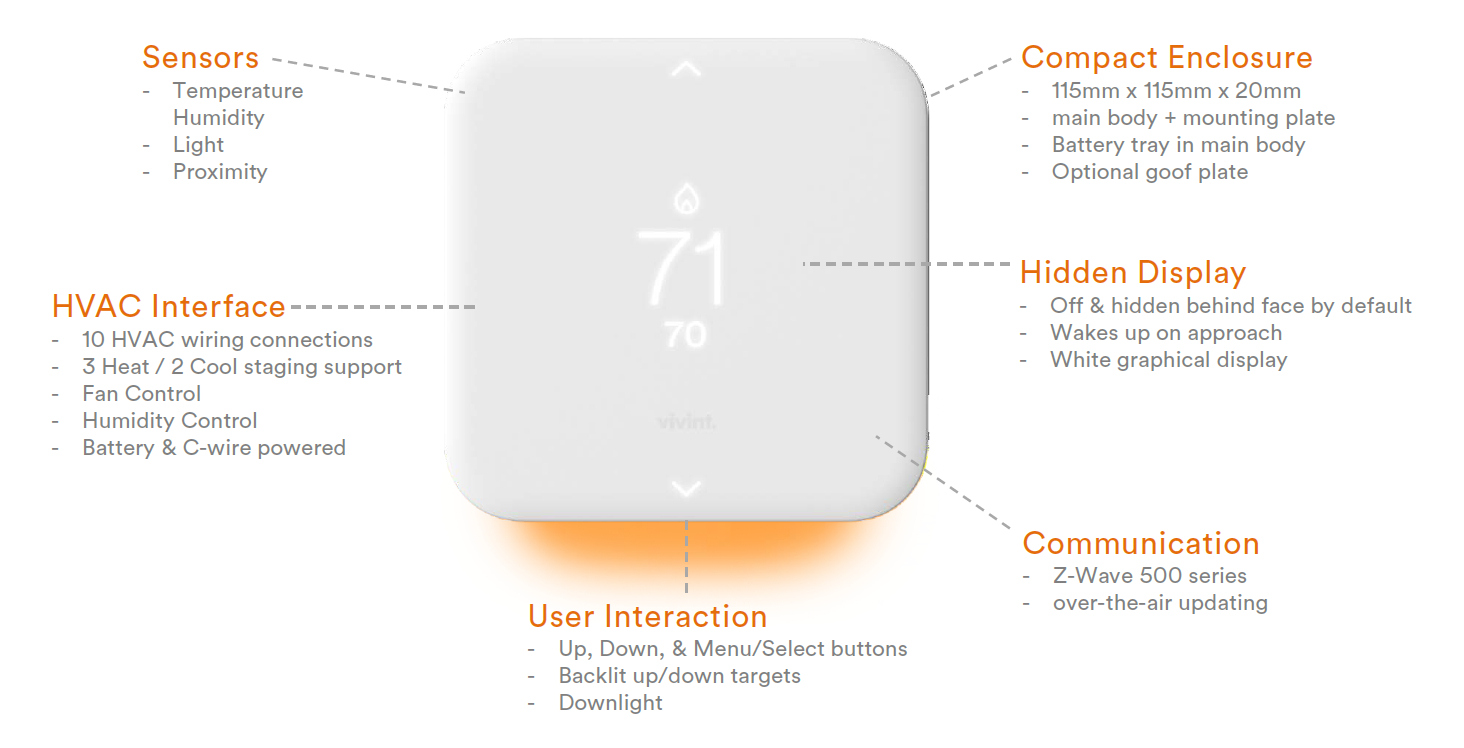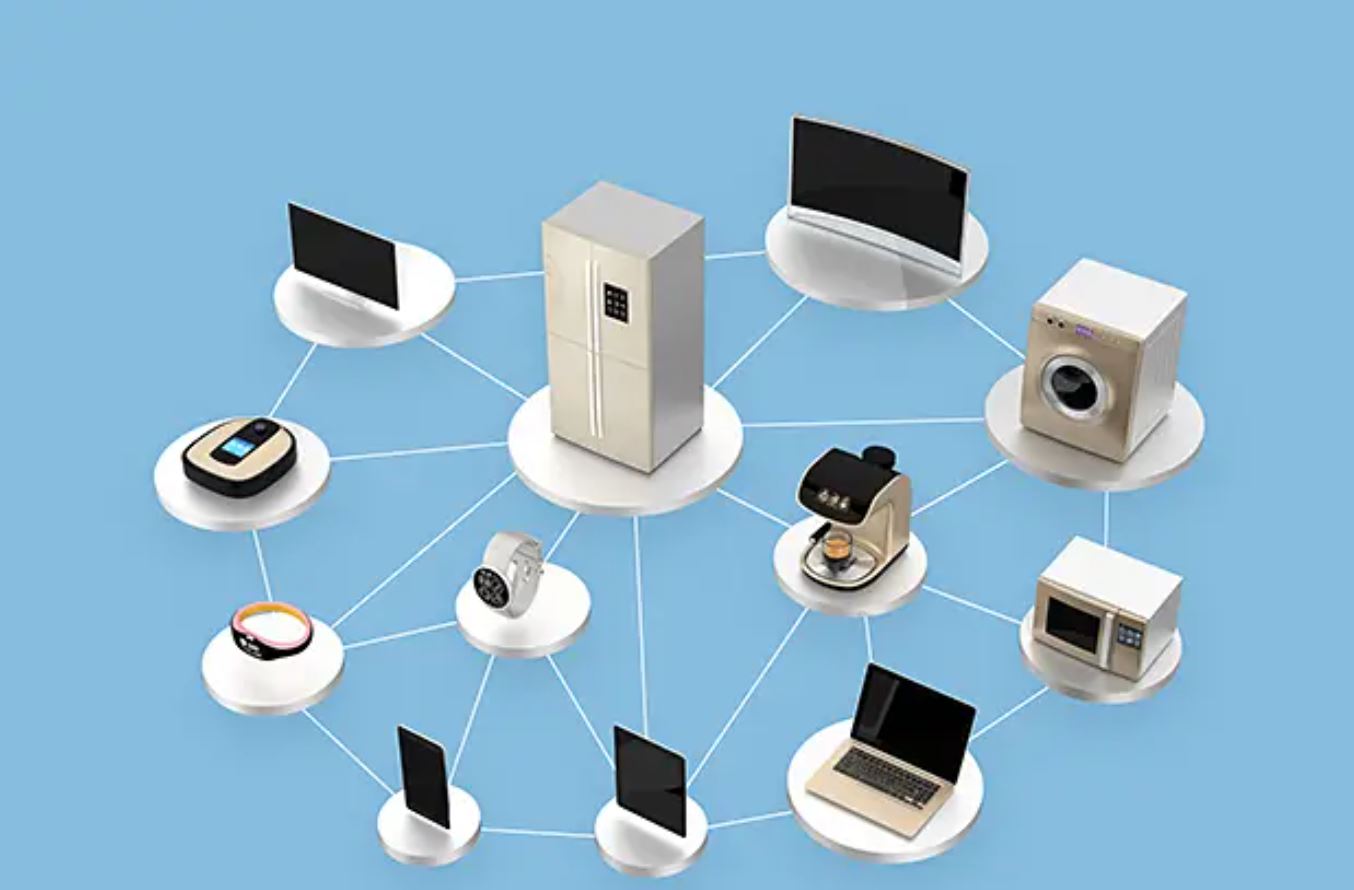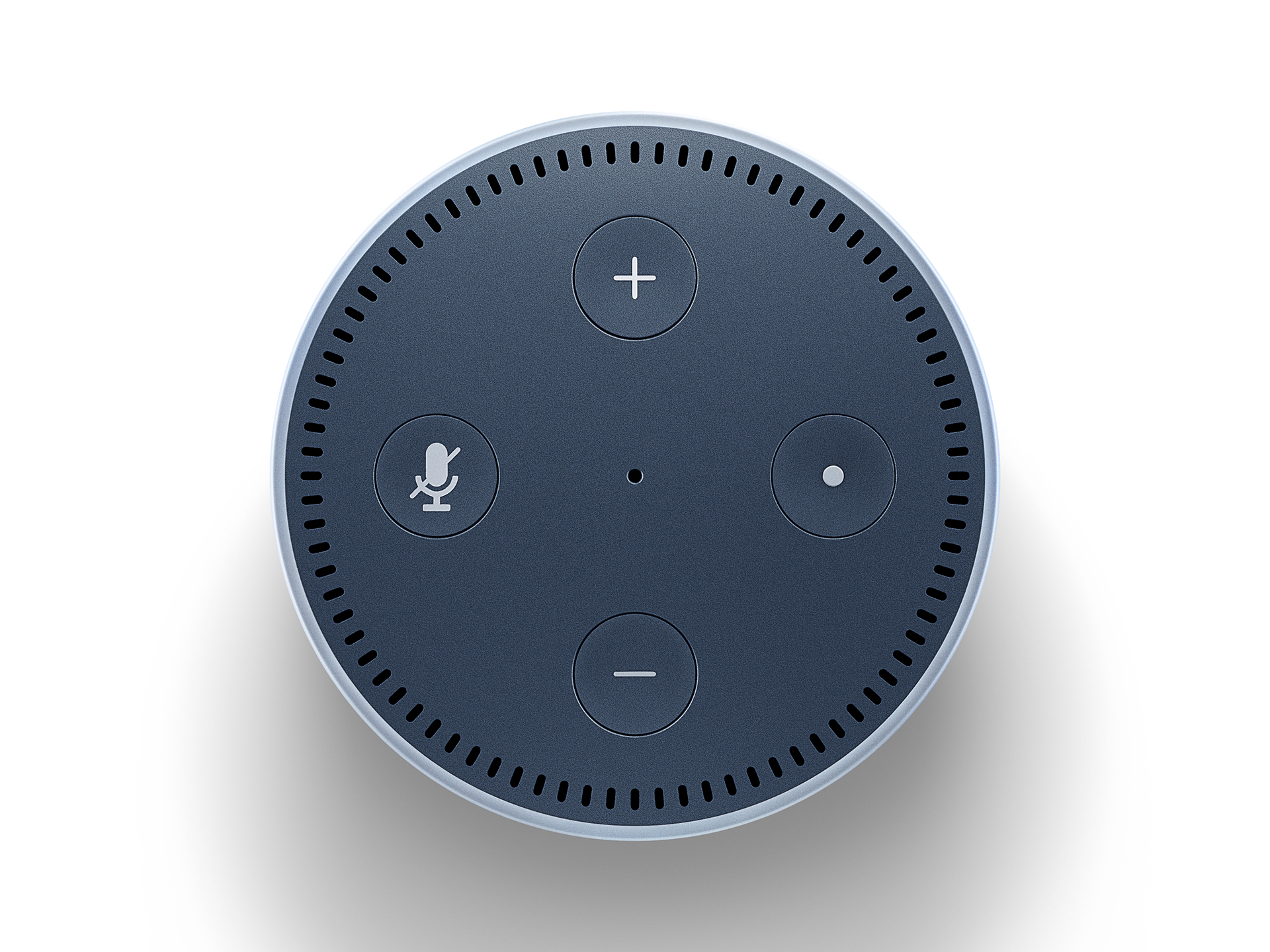Introduction
Welcome to the world of smart homes, where cutting-edge technology seamlessly integrates with our daily lives to provide convenience, comfort, and efficiency. Over the past few years, smart home systems have gained immense popularity, revolutionizing the way we interact with our homes. From controlling lights and temperature with a simple voice command to monitoring security cameras from anywhere through our smartphones, smart home systems offer a whole new level of control and convenience.
But what exactly is a smart home system? In simple terms, it refers to a network of interconnected devices and appliances that can be controlled and automated to enhance the functionality and efficiency of a home. These devices use advanced technologies such as Artificial Intelligence (AI), Internet of Things (IoT), and voice recognition to provide a seamless and personalized experience to homeowners.
The benefits of a smart home system are immense. Not only does it make our lives more convenient, but it also saves energy, enhances security, and improves overall comfort. Imagine coming home to a well-lit house, perfectly adjusted temperatures, and your favorite music playing in the background – all with just a simple voice command or a tap on your smartphone. With a smart home system, this level of control and automation is within your reach.
A smart home system consists of various components that work together to create a connected and intelligent home environment. These components include smart lighting, smart thermostats, smart security systems, smart appliances, smart entertainment systems, and home automation systems. Each of these components plays a unique role in transforming a regular home into a smart and efficient living space.
In the following sections, we will explore each of these components in detail, discussing their features, benefits, and how they contribute to creating a modern and intelligent home. Whether you are a tech enthusiast looking to embrace the latest innovations or someone seeking to simplify and streamline your daily routines, building a smart home system offers endless possibilities and convenience.
So, let’s embark on this journey of discovery and learn how to transform your home into a smart, connected, and futuristic retreat.
What is a Smart Home System?
A smart home system refers to a network of interconnected devices and appliances that are designed to enhance the functionality, efficiency, and convenience of a home. These devices utilize advanced technologies such as Artificial Intelligence (AI), Internet of Things (IoT), and voice recognition to automate and control various aspects of the home environment.
At its core, a smart home system is built upon the concept of connectivity. Devices within the system are connected through a central hub or a network, allowing them to communicate with each other and be controlled remotely. This connectivity enables homeowners to manage and monitor their homes from anywhere, using their smartphones, tablets, or even through voice commands to digital assistants like Amazon Alexa or Google Assistant.
Smart home systems offer a wide range of benefits that improve the quality of life for homeowners. With the ability to automate routine tasks, such as adjusting lighting, controlling thermostats, or managing security systems, smart home systems offer convenience and time-saving features. Imagine waking up to a house that has already set the perfect room temperature and prepared a fresh pot of coffee – all thanks to your smart home system.
Energy efficiency is another key advantage of a smart home system. With smart thermostats and energy-monitoring devices, homeowners can optimize energy usage and reduce wastage. For instance, the system can learn your preferences and automatically adjust the temperature based on your patterns, ensuring that energy is not wasted when you’re away.
Enhanced security is also a crucial component of smart home systems. With smart security devices such as smart door locks, video doorbells, and surveillance cameras, homeowners can monitor and control access to their homes remotely. These security features provide peace of mind knowing that your home is protected, and you can keep an eye on it even when you’re away.
Another exciting aspect of smart home systems is the integration of entertainment and multimedia devices. With smart TVs, audio systems, and media players, homeowners can enjoy seamless connectivity and control over their entertainment setup. Imagine being able to stream your favorite shows or playlists from any room in the house, all with a single command.
In essence, a smart home system transforms a regular home into an intelligent, connected space that adapts to your lifestyle and preferences. By integrating various devices and appliances, it offers convenience, energy efficiency, enhanced security, and an elevated living experience. Whether you’re looking to simplify your daily routines or embrace the latest technological innovations, a smart home system opens up a world of possibilities.
Benefits of a Smart Home System
Investing in a smart home system offers an array of benefits that enhance your daily life and transform the way you interact with your home environment. From convenience and energy efficiency to enhanced security and entertainment, the advantages of a smart home system are plentiful.
1. Convenience: One of the primary benefits of a smart home system is the convenience it provides. With a few taps on your smartphone or a simple voice command, you can control various aspects of your home, such as adjusting the lights, setting the temperature, or even starting your appliances. Say goodbye to searching for switches or manually adjusting settings – a smart home system simplifies and automates your daily tasks.
2. Energy Efficiency: Smart home systems are designed to optimize energy usage and reduce wastage. With features like smart thermostats, you can program your heating and cooling settings based on occupancy patterns, ensuring efficient energy consumption. Additionally, smart lighting systems can automatically turn off lights when no one is in the room, further reducing energy usage and utility bills.
3. Enhanced Security: Smart home systems provide advanced security features that give you peace of mind. From smart door locks and video doorbells to motion sensors and surveillance cameras, you can monitor and control access to your home remotely. Receive real-time alerts on your smartphone when someone approaches your property or when unusual activity is detected, allowing you to take immediate action to protect your home and loved ones.
4. Remote Monitoring and Control: With a smart home system, you can monitor and control your home even when you’re away. Whether you’re at work or on vacation, you can use your smartphone to check the status of your security system, adjust the temperature, or even turn on/off lights. This level of remote monitoring and control offers convenience, security, and peace of mind, knowing that you’re always connected to your home.
5. Entertainment Integration: Smart home systems allow for seamless integration of entertainment devices, offering a more immersive and connected experience. With smart speakers, TVs, and media players, you can control and stream your favorite music and movies from anywhere in your home. Create customized playlists, adjust volume levels, and enjoy a truly integrated entertainment experience.
6. Personalization and Adaptability: Smart home systems are designed to adapt to your preferences and lifestyle. Through machine learning and AI capabilities, the system learns your patterns and adjusts settings accordingly. For example, it can automatically adjust the temperature when it senses your arrival or optimize lighting based on your daily routines. This personalization offers a tailored and comfortable living environment.
In summary, a smart home system offers convenience, energy efficiency, enhanced security, remote monitoring and control, entertainment integration, and personalization. By integrating advanced technologies, these systems transform houses into intelligent, connected homes that enhance your daily life and provide a heightened level of comfort and convenience.
Components of a Smart Home System
A smart home system is composed of various interconnected components that work together to create a seamless and intelligent living environment. Each component serves a unique purpose and contributes to the overall functionality and convenience of a smart home. Let’s explore the key components of a smart home system:
1. Smart Lighting
Smart lighting systems allow you to control and automate the lighting in your home. With smart bulbs, switches, or dimmers, you can adjust the brightness, color, and schedule of your lights through your smartphone or voice commands. Some systems even offer features like motion detection, allowing lights to turn on automatically when you enter a room. Smart lighting not only adds convenience but also helps to save energy by optimizing usage.
2. Smart Thermostat
A smart thermostat is designed to intelligently control the temperature of your home. It learns your heating and cooling preferences and adjusts accordingly, optimizing energy usage and providing comfort. Through your smartphone or voice commands, you can customize temperature settings, create schedules, and even control the thermostat remotely. Smart thermostats can also integrate with other smart home devices, allowing for enhanced automation and energy efficiency.
3. Smart Security
Smart security systems offer advanced features to protect your home and provide peace of mind. These systems typically include components such as smart door locks, video doorbells, surveillance cameras, and motion sensors. With remote access and real-time notifications on your smartphone, you can monitor and control access to your home, receive alerts for any suspicious activity, and even communicate with visitors remotely. Smart security systems offer enhanced security and convenience, allowing you to keep your home safe and secure.
4. Smart Appliances
Smart appliances bring intelligence and connectivity to everyday household devices. From smart refrigerators and washing machines to coffee makers and robotic vacuums, these appliances offer features like remote control, automated tasks, and energy monitoring. You can set schedules, receive notifications, and even control these appliances through your smartphone or voice commands. Smart appliances not only add convenience but also help to improve efficiency and reduce energy consumption.
5. Smart Entertainment
Smart entertainment systems integrate various multimedia devices to provide a seamless and immersive experience. With smart TVs, media players, and audio systems, you can stream your favorite shows, movies, and music from multiple sources. These systems allow for voice control, personalized recommendations, and the ability to create immersive audiovisual experiences throughout your home. Smart entertainment systems enhance your entertainment options and provide easy access to a wide range of media content.
6. Smart Home Automation
Smart home automation systems bring all the components of a smart home together, allowing for centralized control and automation. These systems act as a hub that connects and manages multiple devices, enabling seamless communication and coordination. With a smart home automation system, you can create custom routines, trigger actions based on specific events, and control different devices within your home with a single command. These systems simplify the management of your smart devices and enhance the overall functionality of your smart home.
By combining these components, you can create a fully interconnected and intelligent home environment. Each component plays a vital role in enhancing convenience, energy efficiency, security, and entertainment. When selecting components for your smart home system, consider your specific needs and preferences, ensuring that they integrate seamlessly into your daily life and offer the desired level of control and automation.
Smart Lighting
Smart lighting is a key component of a smart home system that allows you to have full control over the lighting in your home. With smart bulbs, switches, or dimmers, you can easily adjust the brightness, color, and schedule of your lights with your smartphone or through voice commands.
One of the primary advantages of smart lighting is the convenience it offers. You can turn your lights on or off, dim them, or even change the color with a simple tap on your smartphone or a voice command to your smart assistant. No more getting up to switch the lights off or fumbling for switches in the dark – smart lighting makes it effortless to control the lighting throughout your home.
Smart lighting systems also provide the flexibility to customize and automate your lighting preferences. You can create schedules for your lights to turn on and off automatically at specific times of the day or even simulate occupancy when you’re away. This adds an extra layer of security by giving the impression that someone is home, deterring potential intruders.
Another significant benefit of smart lighting is the energy-saving potential. With smart bulbs, you can set up lighting scenes that automatically adjust the brightness and color temperature to optimize energy consumption. Some systems have motion sensors that detect when a room is empty and turn off the lights to conserve energy. By fine-tuning your lighting settings and utilizing intelligent automation, you can reduce your energy usage and lower your electricity bills.
Smart lighting can also be integrated with other smart home devices, such as motion sensors or security systems, to create a more cohesive and responsive home environment. For example, you can set up your lights to turn on automatically when the motion sensor detects movement or sync your lights with your smart doorbell to flash when someone is at the door.
Beyond practicality, smart lighting also allows for creativity and personalization. With the ability to change colors and create lighting scenes, you can set the mood for different occasions or create a cozy ambiance. Whether you want vibrant colors for a party, calming tones for relaxation, or bright lighting for focused work, smart lighting gives you the freedom to set the perfect lighting atmosphere in any room.
In summary, smart lighting offers convenience, energy efficiency, customization, and mood-enhancing capabilities. It allows you to have full control over your lighting, automate schedules, and integrate with other smart home devices. With smart lighting, you can transform your home’s lighting experience, making it more personalized, efficient, and enjoyable.
Smart Thermostat
A smart thermostat is a key component of a smart home system that allows you to have precise control over the temperature of your home. Unlike traditional thermostats, smart thermostats offer a range of features and capabilities that provide convenience, energy efficiency, and personalized comfort.
One of the primary benefits of a smart thermostat is the ability to control the temperature of your home from anywhere, at any time. Whether you’re at work, on vacation, or simply in another room, you can adjust the temperature settings using your smartphone or through voice commands with a compatible smart assistant.
Smart thermostats also offer the convenience of creating customized schedules that automatically adjust the temperature according to your preferences. You can program the thermostat to reduce energy consumption when you’re away during the day and ensure a comfortable temperature when you return home. By optimizing temperature settings based on occupancy patterns, you can save energy and reduce utility bills without compromising comfort.
Energy efficiency is a significant advantage of smart thermostats. Many models come equipped with sensors and machine learning capabilities that allow the thermostat to learn your heating and cooling preferences over time. The thermostat then adjusts the temperature automatically, ensuring energy is not wasted on heating or cooling an empty home.
Some smart thermostats can also integrate with weather forecasts, taking factors such as outdoor temperature and humidity into account when making temperature adjustments. This helps to ensure optimal comfort levels while further optimizing energy consumption.
Another useful feature of smart thermostats is their compatibility with other smart home devices. They can integrate with smart lighting systems, allowing the lights to adjust based on the thermostat’s settings. For example, when the thermostat detects that you’ve left home and set the temperature to an energy-efficient level, it can automatically instruct the lighting system to turn off unnecessary lights.
In addition to remote control and energy efficiency, many smart thermostats offer advanced features such as humidity control, air quality monitoring, and voice control compatibility. These features enhance the overall functionality and convenience of the thermostat, allowing for a more comfortable and healthier living environment.
In summary, a smart thermostat provides precise control over the temperature of your home, both remotely and through customized schedules. It offers energy efficiency, compatibility with other smart devices, and advanced features to enhance comfort and convenience. By investing in a smart thermostat, you not only gain control over your home’s climate but also contribute to energy savings and a more comfortable living space.
Smart Security
A smart security system is an essential component of a smart home, providing advanced features that enhance the safety and security of your living space. With a combination of smart devices such as door locks, video doorbells, surveillance cameras, and motion sensors, a smart security system allows you to monitor and control access to your home, receive real-time alerts, and deter potential intruders.
One of the key benefits of a smart security system is the ability to remotely monitor and control your home’s security. With a smartphone or a tablet, you can access live video feeds from your security cameras, receive notifications about any suspicious activity, and control your security devices from anywhere. This remote access gives you peace of mind, knowing that you can keep an eye on your home even when you’re away.
Smart door locks are a crucial component of a smart security system, providing convenient and secure access to your home. With features like keyless entry, you can unlock your door using a mobile app, a personalized code, or through biometric authentication. You can also grant temporary access codes to family members, friends, or service providers and receive notifications when someone enters or leaves your home.
Video doorbells are another popular feature of smart security systems. These devices allow you to see and communicate with visitors at your doorstep, whether you’re home or not. You can view live video footage, receive motion detection alerts, and even have a two-way conversation through your smartphone. Video doorbells provide an extra layer of security by allowing you to verify visitors and deter potential burglars.
Surveillance cameras play a crucial role in monitoring your home’s exterior and interior. With high-definition video quality and advanced features like night vision and motion detection, smart security cameras capture clear footage and provide real-time alerts. Some cameras can even differentiate between people, animals, and other objects, avoiding false alarms. Integrated storage options and cloud-based services allow you to review past recordings and provide valuable evidence in the event of a break-in or incident.
Motion sensors are an integral part of a smart security system, detecting any movement within your home. When paired with other devices, such as smart lighting or cameras, they can trigger specific actions, such as turning on lights or recording video footage. Motion sensors provide an added layer of protection, alerting you to any potential unauthorized activity and increasing the security of your home.
In summary, a smart security system offers advanced features and functionality to keep your home safe and secure. With remote access, video surveillance, motion detection, and smart door locks, you can monitor and control access to your home, receive real-time alerts, and deter potential intruders. Investing in a smart security system provides peace of mind, ensuring the safety of your property and loved ones.
Smart Appliances
Smart appliances are an integral part of a smart home system, bringing intelligence, connectivity, and convenience to everyday household devices. These appliances are equipped with advanced technologies and features that allow for remote control, automation, energy efficiency, and enhanced functionality.
One of the key benefits of smart appliances is the ability to control and manage them remotely. Using your smartphone or a smart assistant, you can monitor and control your appliances from anywhere, whether you’re in another room or outside the house. This allows you to start or stop appliances, adjust settings, and receive status updates with ease.
Smart appliances also offer automation capabilities, simplifying your daily routines and saving you time and effort. For example, a smart dishwasher can be programmed to start at a specific time, ensuring that your dishes are cleaned and ready when you need them. Smart washing machines can monitor the load and adjust the settings accordingly, optimizing water and energy usage.
Energy efficiency is another significant advantage of smart appliances. Many smart appliances are designed to be energy-saving, utilizing technologies such as load sensing, adaptive controls, and energy monitoring. With these features, appliances can adjust their operation based on the specific requirements of each load, optimizing energy consumption and reducing utility bills.
In addition to energy efficiency, smart appliances offer features that improve functionality and convenience. For instance, smart refrigerators come with built-in touchscreens, allowing you to manage your grocery lists, check the contents of your fridge remotely, and receive expiration date alerts. Smart ovens provide preheat notifications and remote control, allowing you to start preheating or adjust cooking settings before you even enter the kitchen.
Many smart appliances can also integrate with other devices in your smart home system. For example, your smart refrigerator can sync with your smart lighting system to flash a light when you’re running low on specific groceries. This integration adds a level of convenience and coordination to your daily routines, delivering a seamless and efficient living experience.
Besides the practical benefits, smart appliances also contribute to a more sustainable lifestyle. By optimizing energy usage, reducing waste, and promoting efficient operation, these appliances help to minimize the environmental impact of your household activities.
In summary, smart appliances bring intelligence, connectivity, and convenience to everyday household devices. These appliances offer remote control, automation, energy efficiency, and enhanced functionality. By integrating smart appliances into your smart home system, you can simplify your daily routines, save energy, and enjoy a more convenient and efficient living space.
Smart Entertainment
Smart entertainment is a key component of a modern smart home system, allowing you to enjoy a seamless and immersive entertainment experience throughout your living space. By integrating various multimedia devices, such as smart TVs, media players, and audio systems, smart entertainment systems provide enhanced connectivity, control, and convenience.
One of the primary benefits of a smart entertainment system is the ability to easily access and stream a wide range of digital content. Smart TVs allow you to connect to popular streaming services like Netflix, Hulu, and YouTube, giving you instant access to a vast library of movies, TV shows, and digital media. With a simple click or voice command, you can explore and enjoy high-quality content without the need for additional devices.
Smart media players, such as Apple TV, Roku, or Chromecast, provide even more versatility to your entertainment setup. These devices allow you to cast or stream content from your smartphone, tablet, or computer directly to your TV, creating a seamless multi-screen experience. You can enjoy your favorite videos, photos, and music on the big screen with ease.
Smart audio systems, including wireless speakers and soundbars, take your music listening experience to another level. With smart speakers like Amazon Echo or Google Nest, you can use voice commands to play music, create playlists, adjust volume levels, and even control other smart home devices. These systems offer easy integration with popular music streaming services such as Spotify or Apple Music, enabling you to enjoy your favorite tunes with exceptional sound quality throughout your home.
Smart entertainment systems provide a high degree of control and customization. With advanced features such as voice control, personalized recommendations, and smart home integration, you can effortlessly navigate through your media library, discover new content based on your preferences, and create immersive audiovisual experiences.
Integration with other smart devices enhances the overall entertainment experience. For example, you can connect your smart lighting system to your entertainment setup, allowing the lights to automatically adjust according to the content you’re watching. Imagine the lights dimming and creating a cinematic atmosphere when you start a movie or the lights syncing to the rhythm of the music you’re listening to.
Smart entertainment systems also offer multi-room capabilities, allowing you to extend your entertainment experience beyond a single room. With wireless speakers and synchronized playback, you can enjoy music streaming throughout your home, creating a seamless and immersive audio experience.
In summary, smart entertainment systems provide enhanced connectivity, control, and convenience. By integrating smart TVs, media players, and audio systems into your smart home, you can access a wide range of digital content, enjoy personalized recommendations, and create immersive audiovisual experiences. Smart entertainment systems offer a seamless and convenient way to enjoy high-quality entertainment throughout your living space.
Smart Home Automation
Smart home automation is at the heart of a comprehensive smart home system, bringing all the components and devices together to create a seamlessly interconnected and intelligent living environment. With smart home automation, you can control and coordinate various aspects of your home through centralized management, automate routine tasks, and create personalized experiences based on your preferences and lifestyle.
One of the key benefits of smart home automation is the ability to control multiple devices and systems with a single command or through a mobile app. With a centralized hub or controller, you can manage your smart lighting, thermostat, security, entertainment, and other smart devices from one interface. This level of control simplifies your daily routines and provides a cohesive user experience.
Automation is a major aspect of smart home automation. You can create customized routines and schedules that automatically trigger actions based on specific events or time-based triggers. For example, you can set up a “Good Morning” routine that adjusts the lighting, turns on the coffee machine, and adjusts the thermostat to your desired temperature as soon as you wake up.
Smart home automation systems also support conditional programming, allowing devices to interact and communicate with each other based on predefined rules. For instance, when the front door is unlocked, the lights can turn on automatically, or when the security system detects motion, the cameras can start recording and send you a notification.
Another benefit of smart home automation is the ability to create personalized experiences tailored to your preferences. The system can learn your habits, behaviors, and preferences through machine learning algorithms and adjust settings automatically. For example, it can recognize when you’re about to arrive home based on your location and adjust the temperature accordingly or anticipate your entertainment preferences based on your viewing habits.
Smart home automation also enables energy efficiency by optimizing the usage of various devices and systems. Through automation and intelligent scheduling, you can ensure that lights are turned off when not in use, appliances are not left running unnecessarily, and thermostats are set to energy-saving modes when no one is home. This not only reduces energy waste but also helps to lower utility bills.
Furthermore, smart home automation systems provide the flexibility to integrate with external platforms and services. Integration with voice assistants like Amazon Alexa or Google Assistant allows for convenient voice control of your smart home devices. Integration with third-party applications, such as weather services or home automation platforms, expands the capabilities of your smart home system and opens up possibilities for automation and interoperability.
In summary, smart home automation brings all the components of a smart home together, offering centralized control, automation, personalized experiences, and energy efficiency. By integrating various devices and systems, you can simplify your daily routines, enjoy a tailored living experience, and optimize energy usage. Smart home automation provides the foundation for creating an intelligent, interconnected, and efficient living environment.
Choosing the Right Devices for Your Smart Home System
When it comes to building your smart home system, choosing the right devices is crucial to ensure seamless integration, functionality, and compatibility. With a wide range of options available in the market, it’s essential to consider several factors to make informed decisions that meet your specific needs and preferences.
1. Compatibility: Start by considering the compatibility of the devices with each other. Ensure that the devices you choose are compatible and can communicate with one another. Look for devices that support common protocols like Wi-Fi, Bluetooth, or Zigbee. This will enable seamless integration and interoperability between different components of your smart home system.
2. Device features: Evaluate the features and capabilities of each device. Consider what functionalities are important to you and your lifestyle. For example, if you prioritize security, look for a camera system with high-resolution video and advanced motion detection capabilities. If energy efficiency is a priority, seek out smart appliances with energy-saving features and monitoring capabilities.
3. User interface: Assess the user interface and control options provided by the devices. Look for devices that have user-friendly mobile apps or web interfaces that allow for easy control and customization. Consider devices that also offer voice control compatibility with popular smart assistants like Amazon Alexa or Google Assistant for added convenience.
4. Integration with existing devices: If you already have smart devices in your home, make sure that the new devices you choose can integrate with your existing setup. Compatibility with your current devices will ensure a smooth transition and prevent any discrepancies or limitations in functionality.
5. Brand reputation and customer reviews: Research the reputation and customer reviews of the brands and devices you are considering. Look for established brands with a track record of quality and reliability. Customer reviews can provide insights into the real-world performance and user experience of the devices you’re interested in.
6. Scalability: Consider the scalability of the devices and the overall smart home system. Determine if the devices can be easily expanded or integrated with future additions to accommodate your evolving needs. Scalability ensures that your smart home system can grow and adapt as new technologies and devices become available.
7. Budget: Set a budget for your smart home system and carefully consider the cost of the devices you’re considering. While quality and functionality are crucial, it’s important to choose devices that align with your budget. Avoid overspending on features or capabilities that you may not need.
Taking these factors into account will help you make informed decisions and select the right devices for your smart home system. Make a list of your priorities, do thorough research, and consider seeking expert advice to ensure that you choose devices that seamlessly integrate, enhance the functionality of your home, and provide the desired level of control and automation.
Setting Up Your Smart Home System
Setting up your smart home system requires careful planning and execution to ensure a smooth and successful integration of all components. Follow these steps to effectively set up your smart home system:
1. Plan your layout: Start by creating a layout of your home and identifying the areas where you want to install smart devices. Consider the rooms, specific locations, and functionalities you want to enhance with smart technology. This will help you determine the number and placement of devices required.
2. Choose a central hub: Select a central hub or controller that will serve as the brain of your smart home system. The hub will allow all your devices to communicate and be managed from a single point. Research different hub options based on compatibility, features, and user interface to find the one that suits your needs.
3. Install and configure the central hub: Follow the manufacturer’s instructions to install and configure the central hub. This may involve connecting it to your home network, creating an account, and performing any necessary software updates. Configure the hub to connect with all the devices you plan to integrate into your smart home system.
4. Install smart devices: Begin installing your smart devices according to the manufacturer’s instructions. This may involve connecting them to power sources, configuring Wi-Fi or other network settings, and pairing them with the central hub. Take note of any specific requirements or considerations for each device to ensure proper functionality.
5. Set up device control: Use the manufacturer’s mobile app or web interface to set up device control and customization. Configure settings, create schedules, and personalize the behavior of each device to align with your preferences and lifestyle. Take time to explore the available features and options provided by each device, and adjust them accordingly to maximize their usefulness.
6. Test and troubleshoot: Once all devices are installed and configured, test each device to ensure proper functionality. Verify that they can be controlled from the mobile app or through voice commands if applicable. Troubleshoot any issues that may arise, such as connectivity problems or compatibility conflicts, by referring to the manufacturer’s troubleshooting guide or contacting customer support.
7. Educate yourself and other household members: Familiarize yourself and other household members with the operation and control of the smart home system. Provide basic training on how to use the mobile app, voice commands, and any other control options. Establish any guidelines or best practices for device usage and maintenance to ensure everyone can fully enjoy the benefits of the smart home system.
8. Expand and optimize: As you become more comfortable with your smart home system, consider expanding and optimizing it further. Explore additional devices and features that align with your needs and interests. Continuously monitor and update your system to take advantage of new technologies, firmware updates, and integration possibilities.
By following these steps, you can effectively set up your smart home system and enjoy the convenience, automation, and control it provides. Investing time in proper planning and implementation will ensure a well-integrated and functional smart home experience.
Troubleshooting Common Issues
While setting up and using a smart home system can bring numerous benefits, it’s important to be prepared for potential issues that may arise. Here are some common issues you may encounter with your smart home system and troubleshooting steps to help resolve them:
1. Connectivity problems: If you experience connectivity issues with your smart devices, such as devices going offline or being unable to connect to your network, start by checking your Wi-Fi connection. Ensure that your router is working properly and that you have a strong and stable Wi-Fi signal in the area where the devices are located. Try power cycling your router and smart devices, and make sure they are within range of the Wi-Fi signal. If issues persist, consider upgrading your router or adding a Wi-Fi extender to improve coverage.
2. Device unresponsiveness: Sometimes, smart devices may become unresponsive or fail to react to commands. First, check that the device has power and is properly connected. If it is battery-powered, ensure the batteries are not drained and are properly inserted. If the device is plugged into an outlet, verify that the outlet is functioning correctly. Attempt to reset the device by following the manufacturer’s instructions. If the problem persists, consider updating the device’s firmware or contacting customer support for further assistance.
3. Compatibility issues: If you encounter compatibility issues between your smart devices or with your central hub, ensure that all devices are on the latest firmware or software updates. Check for any compatibility requirements or known limitations specified by the manufacturer. Consult the manufacturer’s support resources or contact customer support if you need guidance on resolving compatibility issues.
4. Voice command failures: If voice commands to your smart assistant fail to control your devices, verify that the devices are properly connected to the smart assistant and that they are compatible with voice control. Make sure your voice assistant is properly trained to recognize your voice commands and that you are speaking clearly and in the correct syntax. Check for any microphone or network issues with your smart assistant, and consider restarting or resetting the device if necessary.
5. False alarms or notifications: If you receive false alarms or notifications from your smart security system, review the settings and configurations of the respective devices. Adjust motion detection sensitivity, notification settings, or activity zones to minimize false alarms. Ensure that the devices are properly positioned, so they don’t capture unnecessary motion or trigger false alerts. If false alarms persist, consider updating the firmware or contacting customer support for further assistance.
6. Mobile app or hub issues: If you encounter issues with your mobile app or central hub, start by ensuring that you have the latest app version installed. Clear cache or app data if necessary. Verify that your hub is up to date with the latest firmware or software updates. Check for any known issues or updates from the manufacturer. Restart the app or hub if needed, and contact customer support if problems persist.
7. Interference or signal range issues: Some smart devices may experience interference or limited signal range, resulting in reduced performance or connectivity problems. Make sure that devices are positioned within the recommended range of your router or hub. Avoid placing devices near sources of interference like large appliances or other electronics that emit wireless signals. If necessary, consider using Wi-Fi extenders or other network optimization techniques to improve signal strength and coverage.
In summary, troubleshooting common issues with your smart home system involves checking connectivity, power, and compatibility, updating firmware or software, adjusting settings, and seeking assistance from customer support when necessary. By following these steps, you can efficiently resolve issues and get the most out of your smart home system.
Conclusion
Building a smart home system offers incredible convenience, efficiency, and control over your living environment. With the integration of smart lighting, thermostats, security systems, appliances, entertainment devices, and home automation, you can transform your home into a modern, interconnected space that enhances your lifestyle.
By leveraging advanced technologies such as AI, IoT, and voice recognition, smart home systems provide a range of benefits. You can easily control and automate various aspects of your home through mobile apps, voice commands, or centralized control hubs. From adjusting lighting and temperature to monitoring security and enjoying immersive entertainment, smart home systems offer unparalleled convenience and customization.
Energy efficiency is a significant advantage of smart home systems. With intelligent automation and features like smart thermostats and lighting, you can optimize energy usage, reduce waste, and lower utility bills. Moreover, smart security devices provide enhanced safety and peace of mind, allowing you to monitor and control access to your home from anywhere.
Choosing the right devices for your smart home system involves considering compatibility, features, user interface, integration capabilities, brand reputation, scalability, and budget. Proper planning and research will enable you to create a well-integrated and functional smart home system that aligns with your needs and preferences.
During the setup process, it is important to carefully install and configure each component of your smart home system. Testing, troubleshooting, and educating yourself and other household members will ensure a smooth and enjoyable experience with your smart home devices.
In the event that issues arise, common troubleshooting steps can often resolve connectivity problems, device unresponsiveness, compatibility issues, voice command failures, false alarms or notifications, mobile app or hub issues, and interference or signal range issues.
In conclusion, a smart home system presents endless possibilities for improving the way you live. By integrating intelligent devices and technologies, you can create a more comfortable, convenient, and efficient living space. Embrace the power of smart home technology and unlock the potential to transform your house into a truly connected and intelligent home. Enjoy the benefits, convenience, and control that a smart home system brings to every aspect of your daily life.







